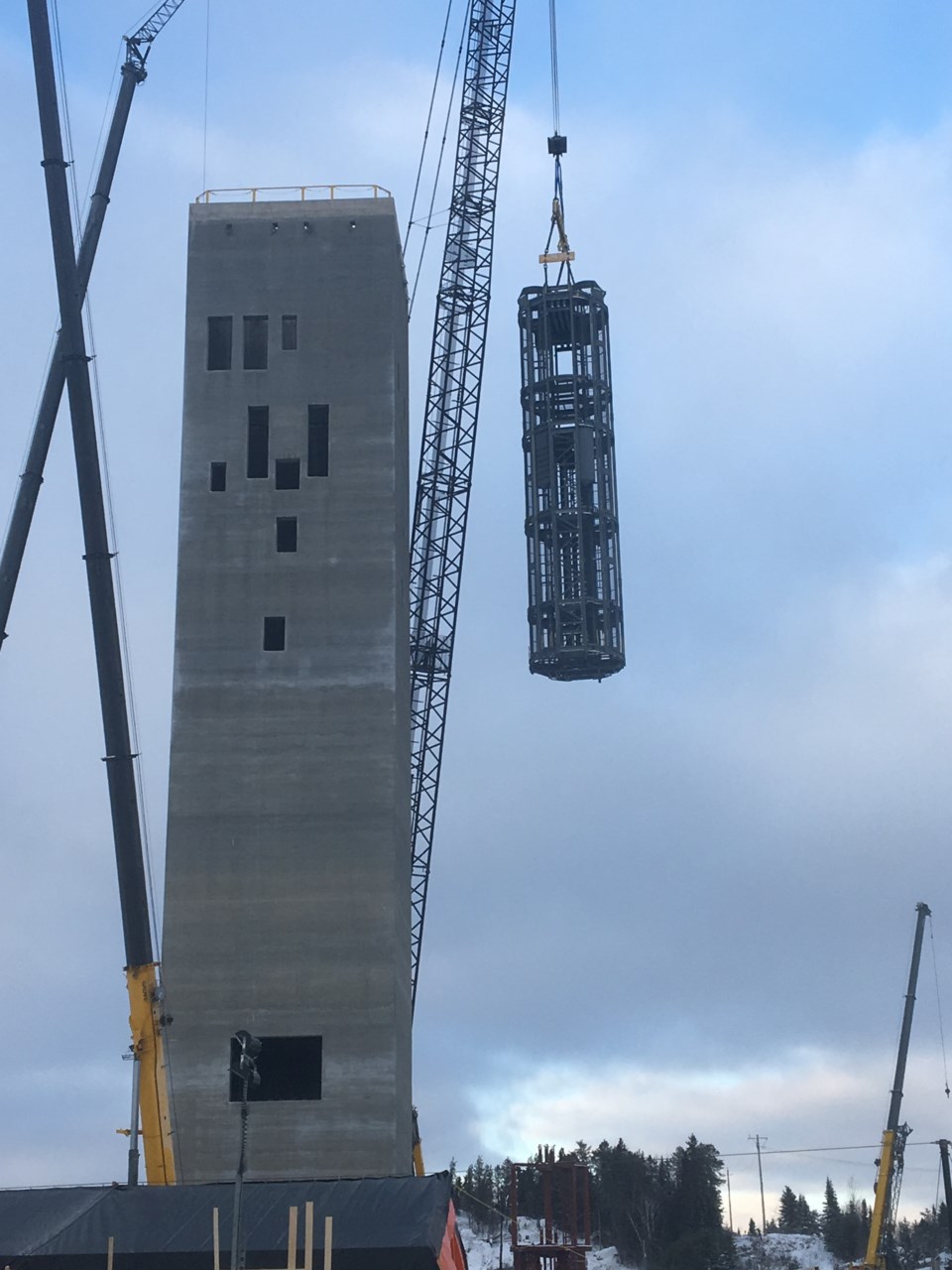The headframe and shaft-sinking infrastructure has been put into place at the #4 shaft at Kirkland Lake Gold’s Macassa Mine, bringing the mine’s development a step closer to completion.
On Nov. 26, North Bay mine builder Cementation reported it had erected the 231-foot concrete headframe by slip form in just 10 days.
It also put into place the Galloway – multi-deck equipment used in the shaft-sinking process – into the shaft collar in preparation for development.
Weighing more than 100 tons and measuring 85 feet long, the Galloway had to be lifted over the top of the headframe and lowered blindly into position, Cementation noted. It was then secured to the shaft walls.
The job involved multiple partners, including Cementation, Tesc, Anmar, Northern Equipment, Niiwin GP, Shaba Testing, Peter Bull, MDB Mining, the Ontario Provincial Police and Kirkland Lake Gold.
The entire lift process took four and a half hours.
The sinking of the #4 shaft to access the South Mine Complex is part of a $350-million expansion at Macassa, which is expected to create 450 jobs and extend the life of the mine by 15 to 20 years.
Phase one, which will cost $240 million, involves sinking the shaft to a depth of 5,450 feet and is expected to be complete in the second quarter of 2022. Phase two will start after production begins following phase one’s completion.
In phase two, the shaft will be extended to 7,000 feet at a cost of $80 million and is expected to be finished by the end of 2023.
When complete, the new shaft will have a capacity to hoist 4,000 tonnes per day of ore and waste, and is expected to help Macassa reach production of 400,000 ounces per year over the next five to seven years.




